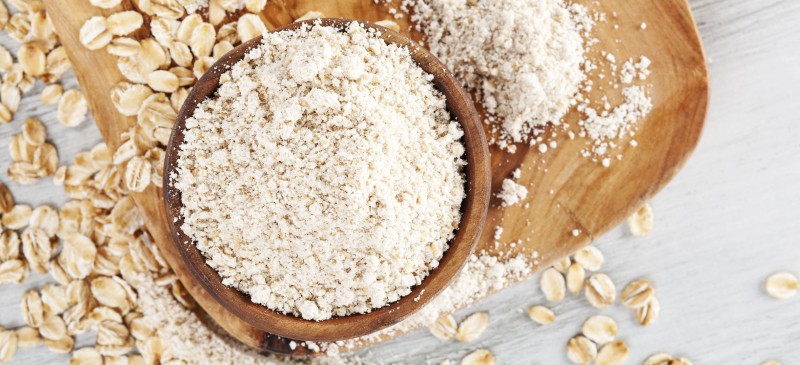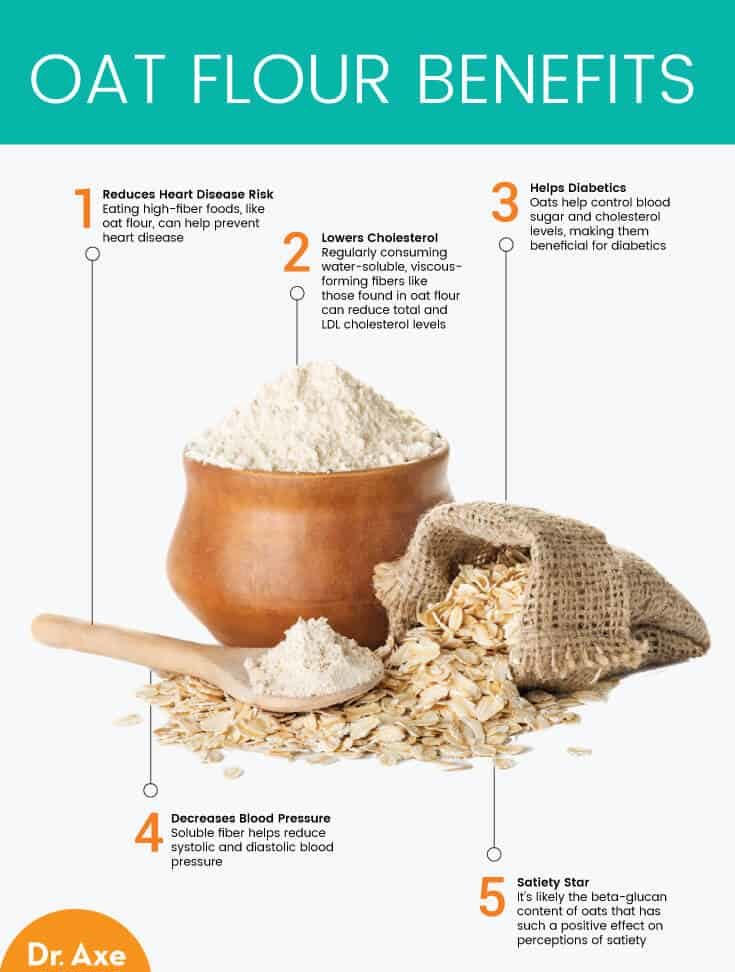This Dr. Axe content is medically reviewed or fact checked to ensure factually accurate information.
With strict editorial sourcing guidelines, we only link to academic research institutions, reputable media sites and, when research is available, medically peer-reviewed studies. Note that the numbers in parentheses (1, 2, etc.) are clickable links to these studies.
The information in our articles is NOT intended to replace a one-on-one relationship with a qualified health care professional and is not intended as medical advice.
This article is based on scientific evidence, written by experts and fact checked by our trained editorial staff. Note that the numbers in parentheses (1, 2, etc.) are clickable links to medically peer-reviewed studies.
Our team includes licensed nutritionists and dietitians, certified health education specialists, as well as certified strength and conditioning specialists, personal trainers and corrective exercise specialists. Our team aims to be not only thorough with its research, but also objective and unbiased.
The information in our articles is NOT intended to replace a one-on-one relationship with a qualified health care professional and is not intended as medical advice.
Oat Flour: The Gluten-Free Flour that Promotes a Healthy Heart
September 24, 2018

If you’ve been looking for a gluten-free flour to use in your recipes, I want to let you know that oat flour is one of the best gluten-free flours. But wait, is oat flour gluten-free? According to the University of Chicago Celiac Disease Center, yes — oats are technically gluten-free since they aren’t a type of wheat, barley or rye grain, which are the three groups of whole grains that naturally contain the protein gluten. Instead of containing gluten, oats and therefore oat flour actually have a protein called avenins.
Oats are considered safe for those with a gluten allergy or gluten intolerance, easier for most people to digest, and much less likely to cause negative reactions. Reports show that “perhaps less than 1 percent of celiac patients show a reaction to a large amount of oats in their diets.” (1) So the good news is that as long as you use 100 percent pure oat flour that has not been contaminated by gluten-rich flours, it’s a great choice for people looking to avoid gluten.
But not only is oat flour gluten-free — it’s also loaded with nutrients and health benefits. How exactly can oat flour benefit your health? Oats have been shown to reduce the risk of coronary artery disease, lower cholesterol levels and more. (2) From oat flour pancakes to oat flour cookies to oat flour bread, there are so many awesome ways to use this gluten-free flour to reap these amazing health benefits.
5 Health Benefits of Oat Flour
1. Reduces Heart Disease Risk
A epidemiologic study published in the Archives of Internal Medicine looked at the relationship between dietary fiber intake and the risk of coronary heart disease (CHD) and cardiovascular disease (CVD) in 9,776 adults . The researchers found that subjects consuming the most fiber, 20.7 grams per day, had 12 percent less CHD and 11 percent less CVD compared to those eating the least amount (five grams per day) of fiber.
The subjects who ate the most water-soluble dietary fiber had even more impressive results with a 15 percent reduction in CHD risk and a 10 percent reduction in CVD risk. Oats contain both soluble and insoluble fiber. This research confirms that eating high-fiber foods, like oat flour, can help prevent heart disease. (3)
2. Lowers Cholesterol
Another reason that oat flour is so great for the heart is that it’s been shown to lower LDL (“bad”) cholesterol. Specifically, it’s the beta-glucan (β-glucan) found mainly in the endosperm cell wall of oats that’s believed to be responsible for decreasing total serum cholesterol and LDL cholesterol. How does it work? Well β-glucan is a highly glutinous soluble fiber so as it travels through the small intestine, it actually limits the absorption of dietary cholesterol. (4)
Recent studies have shown that regularly consuming water-soluble, viscous-forming fibers like those found in oat flour can reduce total and LDL cholesterol levels by about 5 percent to 10 percent. (5)
3. Helps Diabetics
Research shows that, in moderation, oats can be a healthy and helpful food for diabetics and others struggling with blood sugar issues. The aim of a 2015 scientific review was to figure out if oats intake is beneficial for diabetic patients. The researchers looked at 14 controlled trials and two uncontrolled observational studies, and the findings are quite impressive.
Compared with the controls, “oats intake significantly reduced” the concentrations of A1c and fasting blood glucose as well as total cholesterol and LDL cholesterol. The conclusion of the review is that oats intake can benefit both blood sugar control and lipid profiles in type 2 diabetics, making it a great addition to any diabetic diet plan. (6)

4. Decreases Blood Pressure
Oat flour made from pure whole oats may also help your blood pressure numbers. A recent study shows that adding oats to a standard American diet can help reduce both systolic and diastolic blood pressure in people with mild or borderline hypertension. Specifically, the subjects who added soluble fiber-rich whole oats to their daily diets experienced a 7.5 unit drop in systolic blood pressure and a 5.5 unit reduction in diastolic blood pressure. Meanwhile, the control group had “virtually no change” in either systolic blood pressure or diastolic blood pressure. (7)
5. Satiety Star
If you’ve ever eaten a bowl of oatmeal for breakfast, you’re familiar with how oats can hold you over really well until your next meal. Since oat flour is really just ground-up whole oats, adding it to your meals and recipes can also help you feel more satisfied after consuming it.
Scientific research published in the European Journal of Clinical Nutrition aimed to produce a validated satiety index of common foods. Many different foods were tested, and oatmeal ended up being rated No. 1 among breakfast foods and No. 3 overall. (8, 9) A scientific review published in 2016 suggests that it’s likely the beta-glucan content of oats that has such a positive effect on perceptions of satiety. (10)
Nutrition Facts
Oat flour comes from oats. What are oats? The oat (Avena sativa) is a type of cereal grain grown for its seed. The seed is also called an oat. Oats grow best in temperate climates.
Like oats, the flour offers its consumers so many nutrients, and I bet you’ll be especially surprised by how much protein it holds.
A hundred grams (about 1/2 cup) of oat flour contains about: (11)
- 404 calories
- 65.7 grams carbohydrates
- 14.7 grams protein
- 9.1 grams fat (including omega-3 fatty acids)
- 6.5 grams fiber
- 4 milligrams manganese (201 percent DV)
- 34 micrograms selenium (49 percent DV)
- 0.7 milligram thiamine (46 percent DV)
- 452 milligrams phosphorus (45 percent DV)
- 144 milligrams magnesium (36 percent DV)
- 4 milligrams iron (22 percent DV)
- 0.4 milligram copper (22 percent DV)
- 3.2 milligrams zinc (21 percent DV)
- 371 milligrams potassium (11 percent DV)
- 32 micrograms folate (8 percent DV)
- 0.1 milligram riboflavin (7 percent DV)
- 1.5 milligrams niacin (7 percent DV)
- 0.1 miligram vitamin B6 (6 percent DV)
- 55 milligrams calcium (6 percent DV)
- 0.7 milligram vitamin E (4 percent DV)
- 3.2 micrograms vitamin K (4 percent DV)
History and Flour Comparison
The oldest known oat grains were likely found in Egypt among remains of the 12th Dynasty circa 2000 B.C. However, these oats were likely weeds that were not cultivated by the Egyptians. Before oats were consumed as a food, they were used medicinally, which they still are today. Some say the oldest known cultivated oats were found in caves in Switzerland from the Bronze Age.
In the early 17th century, Scottish settlers brought oats to North America. Today, some of the largest commercial producers of oats include the United States, Germany and Poland. (13)
Oat flour is a perfect gluten-free flour choice when a recipe doesn’t require gluten to rise. It adds a rich, nutty flavor to any recipe. For example, it’s great in cookies and makes them even chewier than normal. Also on the plus side, oat flour tends to make baked goods more moist than wheat flour. It can be equally exchanged in recipes for the following gluten-free flours: rice flour, millet flour and sorghum flour.
Unfortunately, for baked foods that need to rise, oat flour must be combined with other flours. Spelt flour, on the other hand, is a mild-flavored whole-grain flour that can be substituted in equal amounts for whole-wheat or all-purpose flour in most recipes. Sometimes you may use a little less spelt flour because it’s more water-soluble. Unlike gluten-free oat flour, spelt flour does contain some gluten (which is why it can be substituted for all-purpose flour so easily), but it does seem to be digested better than wheat or all-purpose flour for a lot of people.
Coconut flour and almond flour are two gluten-free flours that also have a significant amount of fiber and other nutrients. Coconut flour mainly contains inulin fiber, which can be hard on some people’s digestive systems since it’s a FODMAP, a class of carbohydrates that rapidly ferment in the colon and can produce gas and digestive issues for some people. Meanwhile, almonds are considered a moderate FODMAP, but almond flour contains phytic acid, which is a known gut irritant in large amounts.
Almond flour can typically replace wheat flour in a recipe in a one-to-one ratio. However, if you substitute almond flour for wheat flour, keep in mind that you will likely require additional egg or another binding agent to make the recipe successful. Coconut flour absorbs more water than almond flour does, is denser and creates a softer product. Oat flour is also very water absorbent like coconut flour.
Your flour of choice really depends upon the recipe you’re creating, the flavor profile you’re looking for and your specific health concerns. It often takes experimenting with different gluten-free flours to really see which one is best for you. You can also try combining various gluten-free flours.

How to Find and Use
I recommend purchasing organic sprouted oat flour at your nearest health store or online. If you want to know with absolute certainty that your flour or the oats you’re using to make flour are gluten-free, you can look for products that have gluten-free certification. This way you’ll know that there’s no chance of gluten cross-contamination in oats, which is common. I also recommend buying organic and sprouted flour. Organic oats are available at any grocery store if you want to make homemade oat flour, which is super easy (instructions in the next section).
Oat flour has a mild flavor, yet it’s more interesting than regular all-purpose flour. When added to a recipe, it provides a more chewy, crumbly texture. It’s easiest to substitute it for all-purpose or wheat flour in baked goods that don’t require gluten to rise, such as quick breads and cookies. When you use it in cookie recipes, their consistency is known to become even thicker and chewier. Want to make a classic white or yellow cake with no gluten? Using oat flour as your gluten-free flour of choice is said by baking experts to result in a light and fluffy gluten-free cake. (14)
When using this flour in recipes that require baking powder, add 2.5 teaspoons of baking powder for every cup of flour.
Recipes
You can buy oat flour premade, or you can easily make homemade oat flour. To make oat flour, you only need one ingredient: unflavored rolled oats. They can be instant, quick-cook, old-fashioned or steel-cut. The difference between all of these varieties is their grain size, which doesn’t matter in this case because they’re going to get ground up.
How to make quick oat flour:
- Measure out the amount of rolled oats you want to use, keeping in mind that 1.25 cups of rolled oats makes 1 cup of oat flour.
- Pulse the oats in a food processor until the oats have a powdery consistency. This usually takes about 30 seconds. If you don’t have a food processor, a clean coffee grinder can do the job too. Just make sure it’s free of coffee so you don’t accidentally flavor your oat flour. Also, examine the oat flour to make sure there aren’t any stray whole oats. If there are, just pulse a little longer.
- Your oat flour is now ready to be used, or it can be stored for later use. Since oat flour has a small amount of natural fat content, it can go rancid. The safest bet is to store unused oat flour in the refrigerator or freezer and then bring it to room temperature before use.
Here are some healthy and tasty oat flour recipes to try out:
- Quinoa Banana Oat Flour Pancakes Recipe
- Lemon Protein Bars Recipe
- Oatmeal Cookies Recipe (using oat flour as your gluten-free flour of choice)
Risks and Side Effects
As I said earlier, most people with celiac do well with truly gluten-free oats and oat flour. Oats and oats flour do not contain gluten inherently, but they do contain proteins called avenis. Most celiacs tolerate these non-toxic proteins just fine, but it’s estimated that possibly less than 1 percent of people with celiac show a reaction to a large amount of oats in their diets. If you’re aiming to avoid gluten entirely, just make sure to buy oat flour that’s certified gluten-free because cross-contamination with gluten-containing products is common with oats.
If you don’t normally consume oats or oat flour, you may notice some gastrointestinal symptoms (like gas or bloating) at first, which is typically due to the increased fiber in your diet rather than a reaction to the oats.
Final Thoughts
If you’re looking for another go-to gluten-free flour, I highly recommend oat flour. It’s especially great in healthy cookie and quick bread recipes.
When you consume oat flour, you get all of the awesome goodness contained in oats. I’m talking about a surprisingly high amount of protein as well as fiber, all of the B vitamins, manganese, selenium, magnesium … the list really goes on and on.
Similar to the way a bowl of oatmeal can keep you going until your next meal, adding oat flour to a recipe can really up the satiety factor, which is excellent for your energy levels as well as your waistline. Also, let’s not forget all of the major health benefits that oat flour offers to your heart as well as your blood pressure, blood sugar and cholesterol levels.
Oat flour is gluten-free and so much more. I hope you might give it a try soon.












